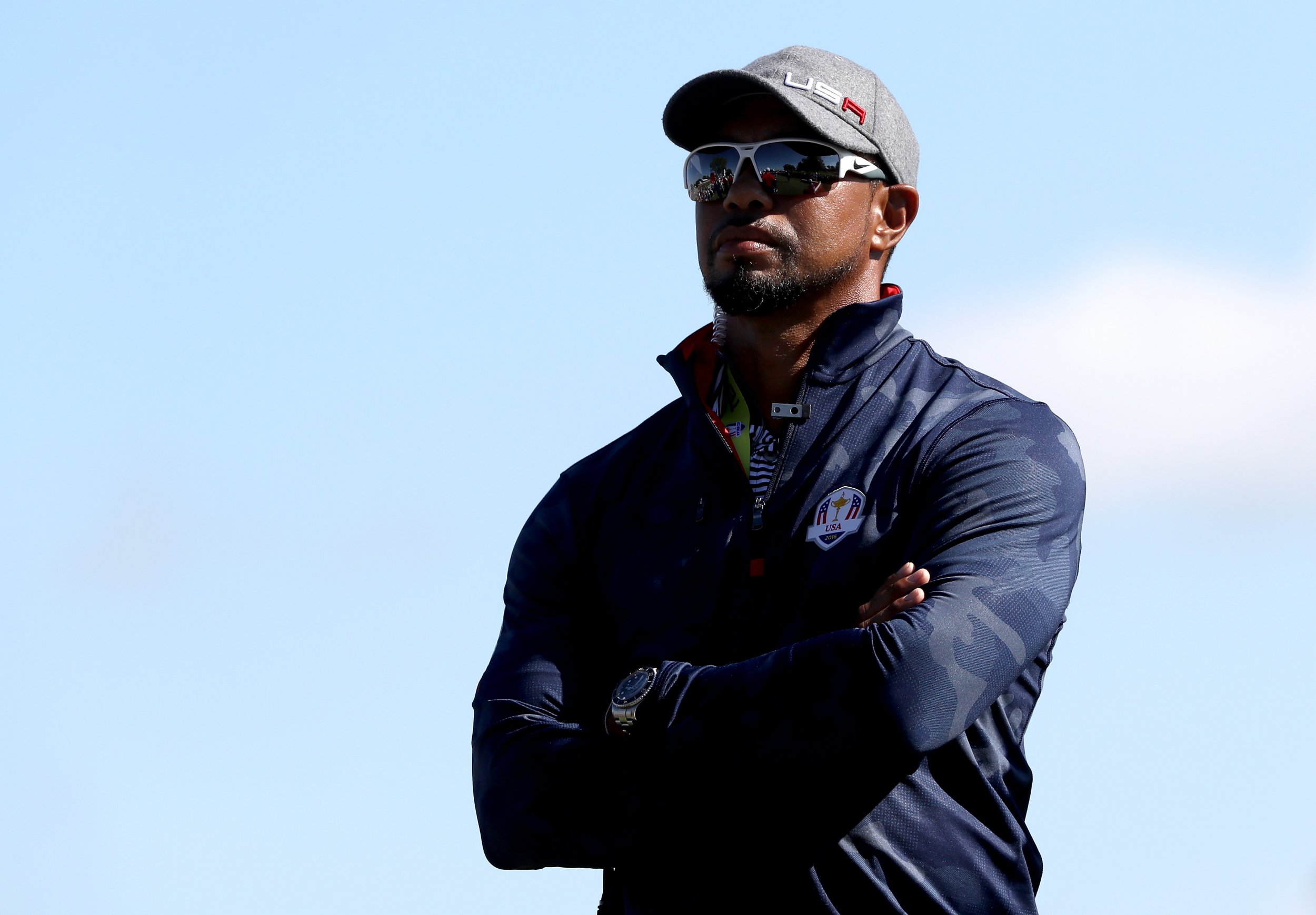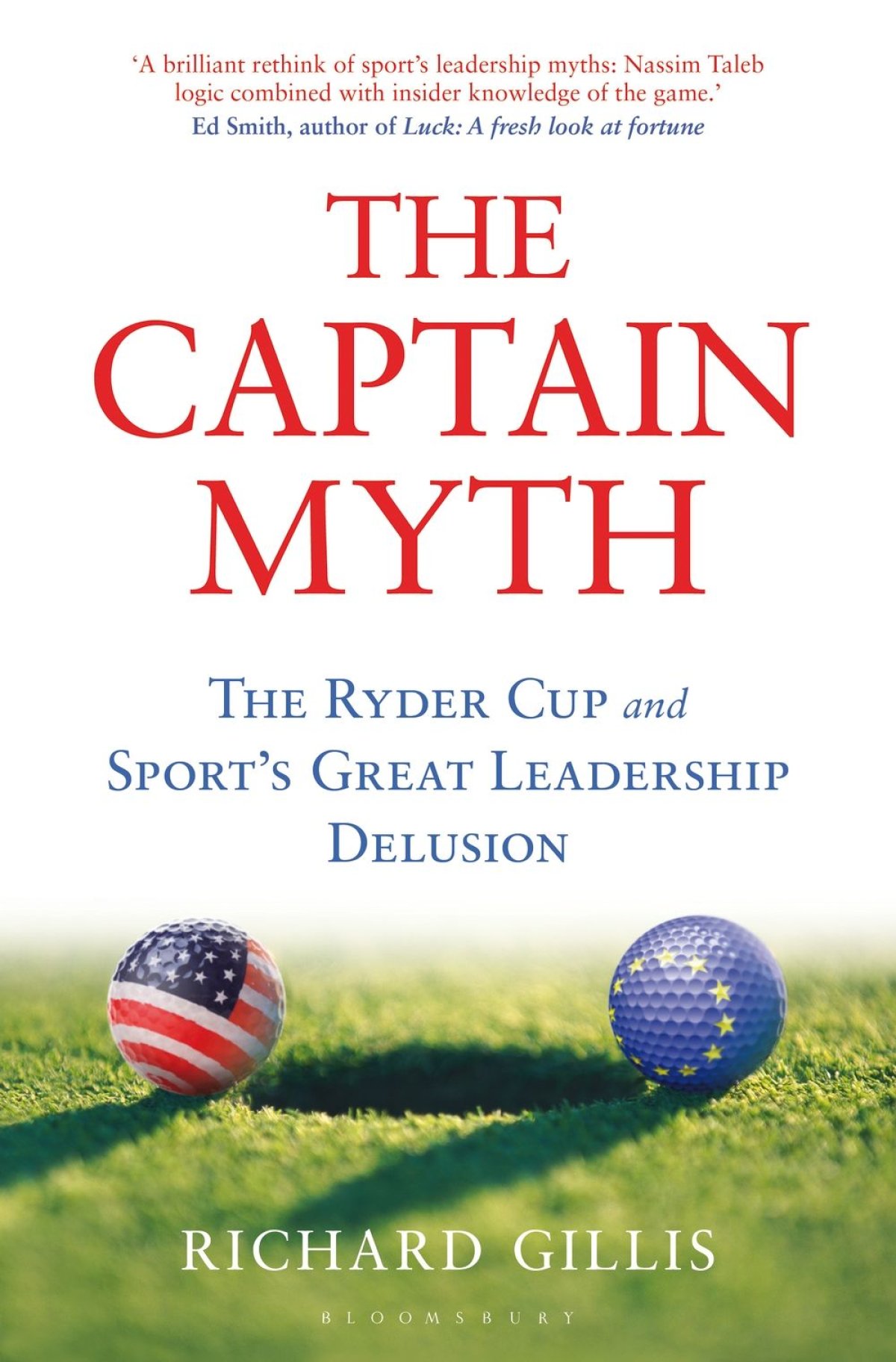
Curtis Strange faced a question that has confronted every American golf captain since 1997—what do I do with Tiger Woods?
The first time most people saw Tiger was in a Nike commercial. "Hello world," he said in 1996, a month after signing the first of several enormous endorsement deals. We listened as Woods talked over stirring images of himself as a child, through footage of him as a world-beating amateur. The myth-making iconography remained pretty much in place over the course of nearly two decades; the component parts of Brand Tiger—the fist pump, the smile and the impassive, unrelenting stare into the camera.
Woods captured the imagination in a way no golfer had since Arnold Palmer in the early days of television. The first Major win at Augusta in 1997 was not only brilliant, it was so 'on brand.' The black kid winning at the Masters, where his skin colour would have prevented him playing until 1975 and where it was compulsory to have a black caddie until 1983.
The Tiger of the Nike ads conflicted with the other public version of Tiger Woods, which could be found at press conferences and in media interviews—an environment every bit as false as advertising. Tiger is famously hard to fathom at these moments when he is contractually obliged to talk the media. He is cool, aloof and can sometimes come across as irritated and arrogant. Despite this, the press gave him a remarkably easy ride, either too in awe of the brand or too scared of his handlers to delve too deep or ask difficult questions.
In this way, Tiger's relationship with the media pre-2008 was somewhat out of time, a throwback to the way Hollywood curated their stars' images during its "golden era" of the 1930s, when famous people were untouchable, protected by the film studios' publicity machines. Few of us peered too far behind the billboard façade that had been erected for our enjoyment. When the billboard version of Tiger fell over in 2008, the real Tiger was there for all to see and, like most of us, it wasn't pretty. Unlike the flawless face on the poster, the real one had warts. In other words, he was human, and we hated him for it.

Both versions of Tiger—the man and the brand—have been a fascinating side story to the Ryder Cup since he made his debut at Valderrama in Tom Kite's team. He traveled to Spain as the holder of the Masters green jacket, but his form was frustratingly sketchy. This was put down to first night nerves, or tiredness, or trying too hard to be the boy wonder, as one caddie put it. The deeper analysis into Woods's erratic relationship with the event would come later.
Kite partnered Woods with his friend Mark O'Meara on the first morning of the match. Expectations were oddly low even then, this time due to the course, which Ballesteros had tricked up to favor the home team. "If you are going to pick a course in the whole world that would be a bad course for Tiger Woods, this is it," said Johnny Miller. "It is the narrowest course and has the smallest greens I've ever seen. It's got trees overhanging the fairways. This is a precision course.
This is a Ben Hogan course... it is not a Tiger Woods course."
Despite Miller's concerns, Woods settled well enough. He hit a 2-iron from the tee of the 535-yard fourth followed by a 9-iron lay-up and a wedge to the green, holing the putt for a perfectly executed "Hogan-like" birdie. This gave the partnership a lead over Montgomerie and Langer they would never relinquish, running out 4 and 2 winners on the 16th.
The good start was misleading. The same four players went out against each other in the afternoon, with the European pair handing out a 5 and 3 win. Woods went from OK to worse the next day when he blew the last hole of the fourball, again partnered with O'Meara. In front of former President George Bush, Woods putted off the 18th green into water, finally going down 2 and 1 to Faldo and Westwood. Worse was to come for Tiger on Sunday, when he went down 4 and 2 to the unfancied Italian Costantino Rocca, leaving the American with a 1–3–1 record for his first three days in Team USA colours.
The up and down nature of that first outing has been repeated many times since. In a career that has had many high points, it's unlikely that he has ever played better than he did through 1999 and 2000, either side of Brookline. Woods won eight times on the PGA Tour in 1999, the first player to achieve this feat since Nicklaus in 1974. A few weeks before the Ryder Cup, he had seen off the challenge of Sergio García to take the USPGA Championship, the final Major of the year.
The season that followed was even better. In 2000, Woods won six consecutive Tour events, the longest winning streak since Byron Nelson in 1948, and he became the youngest player ever to win all four Major championships, broke the scoring record for the lowest stroke average in tour history and won three of that year's Majors, including the U.S. Open, by ten shots. Not for the last time, however, Woods failed to bring this level of play to the Ryder Cup. Ben Crenshaw paired him with three different partners during the week—Tom Lehman, David Duval and Steve Pate—and got just half a point from a possible four in return over the first two days.
"You kind of scratch your head and say, 'What do I do to help this guy?'" wrote Crenshaw later.
The pattern was set, as subsequent captains tried and largely failed to find a formula that would bring the real Tiger Woods to light in American colors. Across Ryder and Presidents Cups, Woods has had 18 different playing partners since he teed off with O'Meara at Valderrama. In addition, Woods is 9–3–2 in his singles matches across his 14 Ryder and Presidents Cups and 33–31–4 in matches at these competitions.
Extracted from The Captain Myth: The Ryder Cup and Sport's Great Leadership Delusion by Richard Gillis (Bloomsbury, £16.99/ £14.99 eBook).
Uncommon Knowledge
Newsweek is committed to challenging conventional wisdom and finding connections in the search for common ground.
Newsweek is committed to challenging conventional wisdom and finding connections in the search for common ground.
About the writer
To read how Newsweek uses AI as a newsroom tool, Click here.








